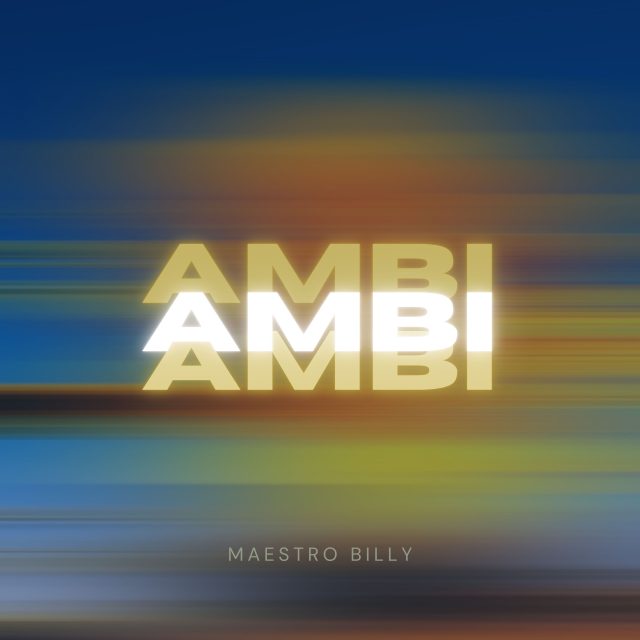
Welcome to the Journey of AMBI
Embark on a sonic odyssey through personal stories, innovative sounds, and the intersection of human creativity and AI.
I’m thrilled to invite you to explore my latest album, AMBI. This collection of tracks represents a deeply personal journey through sound and emotion, and I’m excited to share the stories and inspirations behind each piece.

The album is structured to take you on a sonic voyage, with each track offering its own unique narrative and musical landscape. From the reflective tones of “Hexameter Pt.1” and “Hexameter Pt.2” to the innovative exploration of AI in music with “Reassurance,” and finally, the hopeful transition in “A New Dawn,” each song is a chapter in this musical story.
Throughout this journey, I’ll be giving you insights into the creative process, the ideas that sparked each track, and the ways in which I leveraged technology and personal experiences to craft this album.
Whether you’re here for the music itself, the story behind each track, or the broader discussion about music creation in the age of AI, there’s something for everyone to discover.
Thank you for joining me on this journey. I can’t wait to hear your thoughts and experiences as you listen to AMBI. (Spotify link here).
Best wishes,
Billy
P.S. Don’t forget to follow me on social media for updates on new releases and exclusive content!
Revealing AMBI: A Journey Through Sound and Context
Music is such a personal experience, right?
But, one lesson I’ve learned is that music becomes more meaningful when listeners understand its origins. That’s why I’ll be sharing the ideas and inspirations behind every track on this album, giving you a deeper insight into each piece’s creation.
This idea mirrors the early days of Dadaism.
You can place a bidet as an art piece in a gallery, but providing its name, explaining its purpose, and detailing the creative process behind it is crucial.
That’s why I’m here, offering insights into each track of my album AMBI.
While the song links direct to Spotify, you can enjoy the full album on any music platform of your choice.
Enjoy!
Track 01 – Harmonics and Rain: The Layered Soundscape of ‘Be Present’
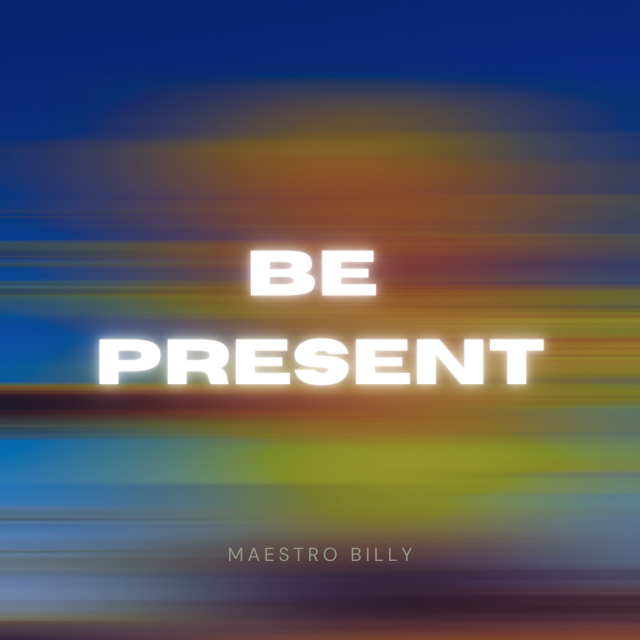
What could be more cliché than starting an album with a bell? Perhaps adding the sound of rain in the background, right?
Well, that’s exactly what I did. A wake-up call on a rainy day to help you “be present”.
The song is slow (at 45 bpm), with layers gradually appearing as the music evolves. An interesting phenomenon occurred while I was creating these layers: the emergence of harmonics when combining two or more sounds.
In simple terms, a harmonic is a wave or signal whose frequency is a whole-number multiple of a reference signal or wave’s frequency.
In practice, this means that when you play two instruments together (or even the same instrument in different notes), new “notes” appear like a sound mirage. I didn’t play these notes, but they materialized from the combination of other notes. You can sense this while listening to the song—some “vibes” emerge unintentionally, adding a new dimension to the sections where they appear.
After completing the initial version of the song, I rendered it into a stereo wave file and applied a stretch effect. This created another sound layer that produced even more harmonics and unusual textures.
For this song, I used an excellent vocal plugin from Crow Hill called Dot Allison Dulcet Voice. Dot Allison is the name of the talented singer who recorded the vocals, which were then transformed into notes we can play freely. So the wailing you hear in the song is indeed human in origin, but not sung directly for this piece.

Interesting, huh?
Here’s the link to listen to the song.
I hope you like it!
Thank you for taking the time to explore “Be Present”, the opening track of my album. I’d love to hear your thoughts and impressions.
Feel free to share your experience or any questions you might have about the creative process behind this piece.
I encourage you to check out the rest of the album. Each track has its own unique story and sonic landscape waiting to be discovered.
Track 02 – Whispers from A House in a Forest: Revealing Nature’s Hidden Symphony
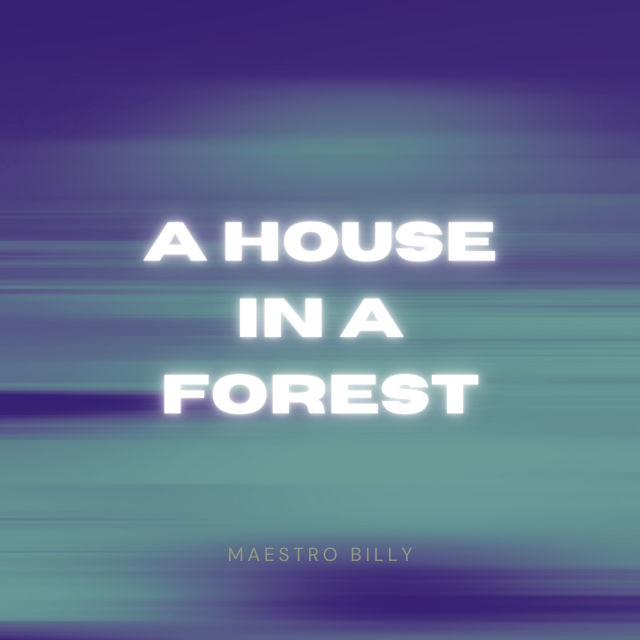
We often overlook the ambient sounds surrounding us, and that’s okay. From an evolutionary perspective, if a noise doesn’t require our brain’s attention for survival, it fades into the background of our consciousness—something we don’t actively focus on.
However, when we close our eyes and deliberately tune in to these sounds, we discover a richer dimension to our environment. It’s not just about visuals, smells, or temperature. Our surroundings are largely perceived through sound.
This realization is the inspiration for this song.
Picture yourself in this scenario:

This is a vast garden in a house nestled in a town in the countryside of São Paulo, Brazil.
I stayed here for several months, attending to family matters.
This place has a unique soundscape. It’s not just the birds and the city’s distant noises, but also the wind, the rustling of tree leaves, and other subtle sounds. We can only truly appreciate these when we close our eyes—or when we record and incorporate them into a song.
This is the central concept behind the second track of my album, “A House in a Forest”.
After recording, I discovered the ambient sound’s root note (it’s in A), which became the foundation for the entire song.
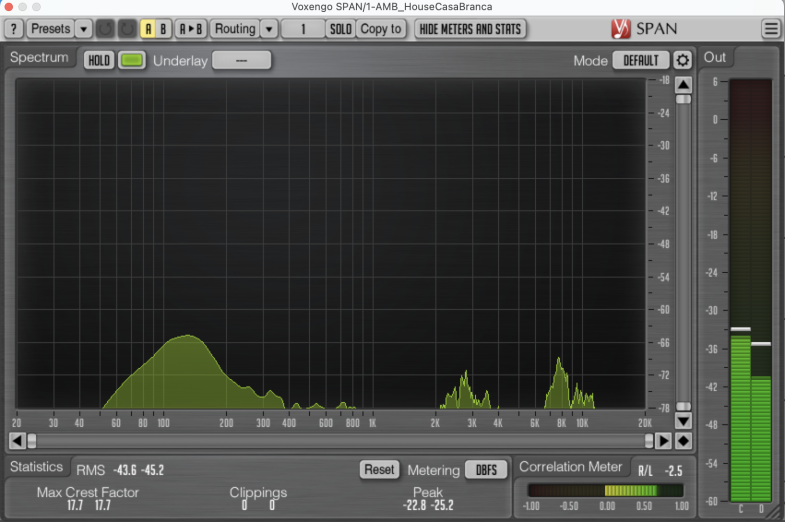
This song explores how this serene place interacts with the city and its inhabitants. You’ll hear lingering cellos and high chords in the background (reminiscent of the ambient wind), alongside pianos, arpeggios, and even a Mellotron. These elements portray the unique dynamic of this place—offering a calming retreat for those who live there, even as they rush through their daily lives.
Next time you’re in a new place, instead of just looking at it, try closing your eyes and listening. You’ll be surprised by the new layer of information that comes to you.
I hope you like it!
Thank you for taking the time to explore “A House in a Forest”, the second track of my album. I’d love to hear your thoughts and impressions.
Feel free to share your experience or any questions you might have about the creative process behind this piece.
I encourage you to check out the rest of the album. Each track has its own unique story and sonic landscape waiting to be discovered.
Track 03 – Healing Harmonies: The Therapeutic Power of Musical Evolution (Succeed)
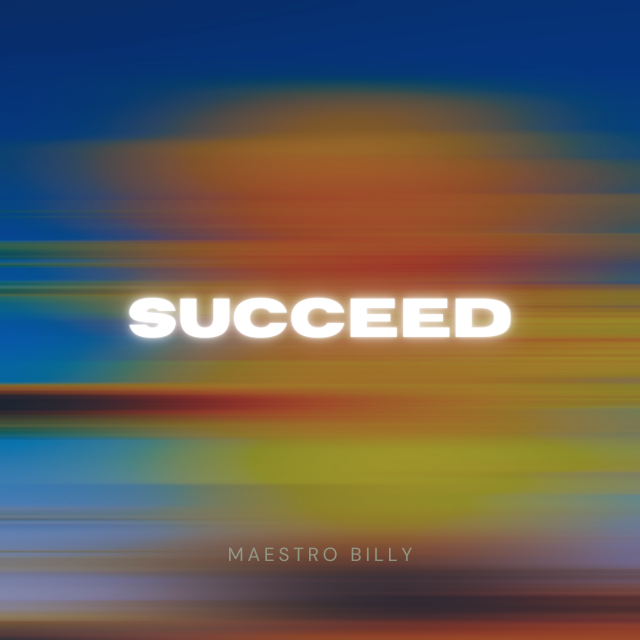
This song is actually a spin-off.
Let me explain:
Certain chord progressions have the power to aid in healing. This isn’t just speculation—it’s a fact supported by scientific and medical research, such as the groundbreaking studies conducted by doctors at Erasmus University in the Netherlands.
This particular song evolved from another piece I composed to help my older daughter through a medical issue she was facing.
The original composition—perhaps better described as a soundscape rather than a traditional song—used different instruments with softer attacks and longer sustains than those I’ve employed here.
I’ve adapted that initial piece to align more closely with conventional music. While the track is relatively simple, as you can see from the screenshot, the processing applied to each instrument creates an ethereal atmosphere.
The title “Succeed” is a testament to the original song’s effectiveness in helping my daughter cope with her health challenges.
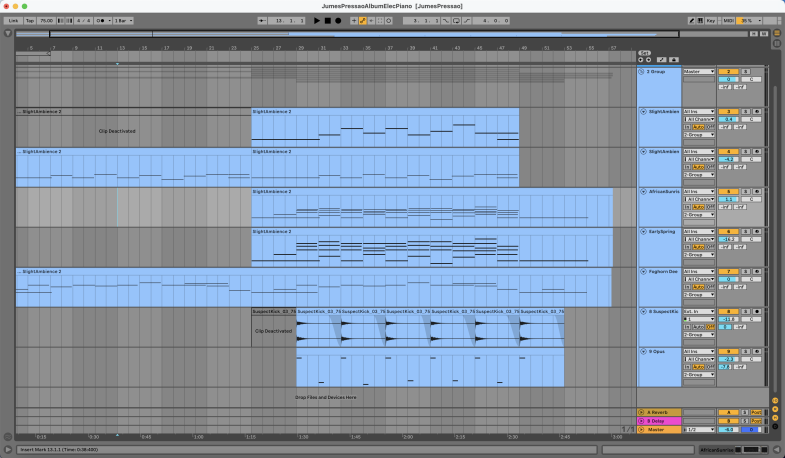
I hope you like it!
Thank you for taking the time to explore “A House in a Forest”, the second track of my album. I’d love to hear your thoughts and impressions.
Feel free to share your experience or any questions you might have about the creative process behind this piece.
I encourage you to check out the rest of the album. Each track has its own unique story and sonic landscape waiting to be discovered.
Track 04 – Taming the Piano’s Power: The Art of Subtle Soundscapes (Contemplation)
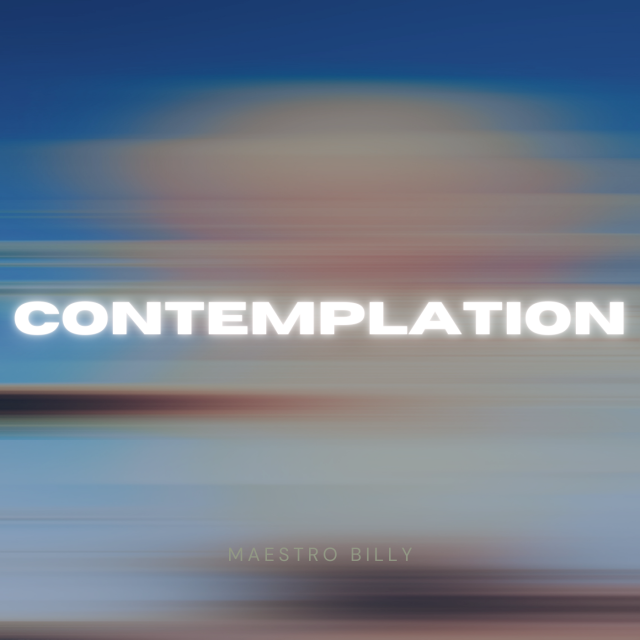
I love the sound of the piano.
I grew up playing piano, starting my first lessons when I was around 8 years old. I’ve continued playing to this day.
However, sometimes the piano’s sound can be a little overwhelming.
Let me explain: The piano, with its 88 black and white keys, encompasses the ranges of all other instruments. Take a look at this image.

When an instrument possesses such range and power, it can sometimes be overwhelming.
For this song, I chose to use treated pianos. These are regular pianos modified with “add-ons” such as felt covering the strings to soften the impact of the hammers, or plastic and metal objects attached to the strings or hammers.
You’ll notice the pianos are present, but they’re not as dominant as a standard piano would be.
In addition to the treated pianos, I layered in synths and even used a foghorn as the bass.
The beautiful wailing vocals come from a sample pack from Splice, a huge database of samples and instruments that you can use by paying a ridiculously low monthly fee. It’s worth checking.
I hope you like it!
Thank you for taking the time to explore “Contemplation”, the third track of my album. I’d love to hear your thoughts and impressions.
Feel free to share your experience or any questions you might have about the creative process behind this piece.
I encourage you to check out the rest of the album. Each track has its own unique story and sonic landscape waiting to be discovered.
Track 05 – “Orchestral Echoes: Unveiling the Symphony of Odd Spaces”
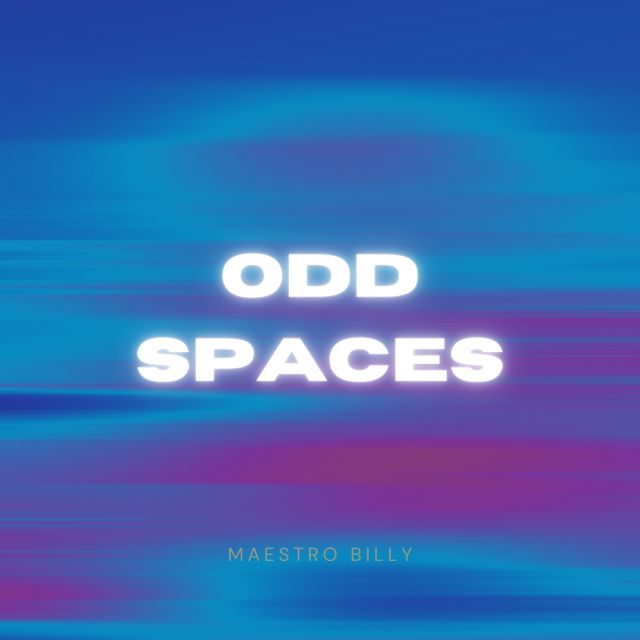
Have you ever attended a classical concert?
Right before the maestro appears on stage, the oboe plays a single A note (440Hz, or in my case 432Hz). All other musicians then start playing their instruments to ensure they’re in tune with each other. Tuning to the same “A” the oboe plays ensures that every musician is perfectly aligned, creating that rich, cohesive sound that fills a concert hall.
Check it out here:
I love this sound. It’s rich, full-bodied, and has this drone quality that can serve as a foundation for other elements.
Also, when we hear it, we subconsciously understand that it’s the beginning of something.
For “Odd Spaces,” I started with this orchestra tuning sample. To add a unique twist, I applied a Shimmering effect. By altering its size throughout the song, it creates interesting deviations from the basic tuning note.

To give the song some momentum, I added low and high-pitched instruments that convey a “here we go” feeling. I also incorporated reversed choirs to mark the exact tempo and chord changes.
Thank you for taking the time to explore “Odd Spaces”, the fifth track of my album. I’d love to hear your thoughts and impressions.
Feel free to share your experience or any questions you might have about the creative process behind this piece.
I encourage you to check out the rest of the album. Each track has its own unique story and sonic landscape waiting to be discovered.
Track 06 – Shimmery: A Cosmic Lullaby
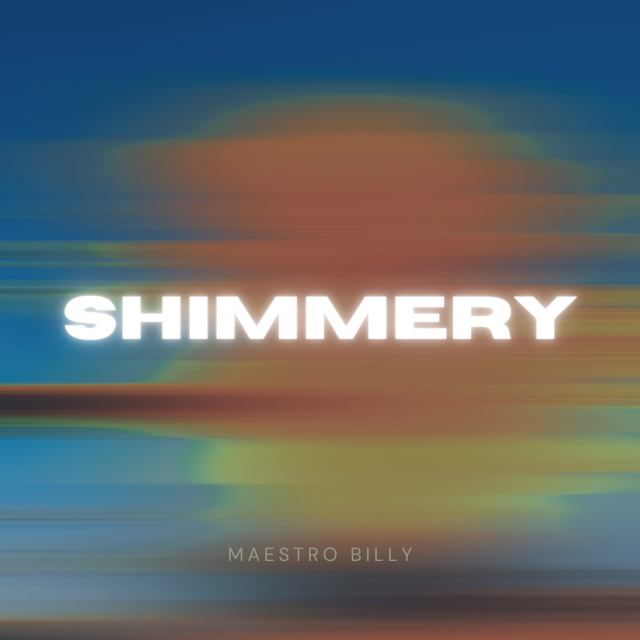
Like the third track of the album, “Succeed“, this one is a spin-off from a healing track I created for my older daughter.
The name “Shimmering” comes from the first part of the song, where you can close your eyes and imagine a swarm of fireflies in a nighttime forest.
To make it a little more surreal, I added an instrument I’ve always wanted to use—ever since I heard those amazing Vangelis songs in my youth. I’m talking about those deep-phased keyboards, just like Mr. Vangelis used in songs like Albedo 0.39 and Theme from Cosmos.
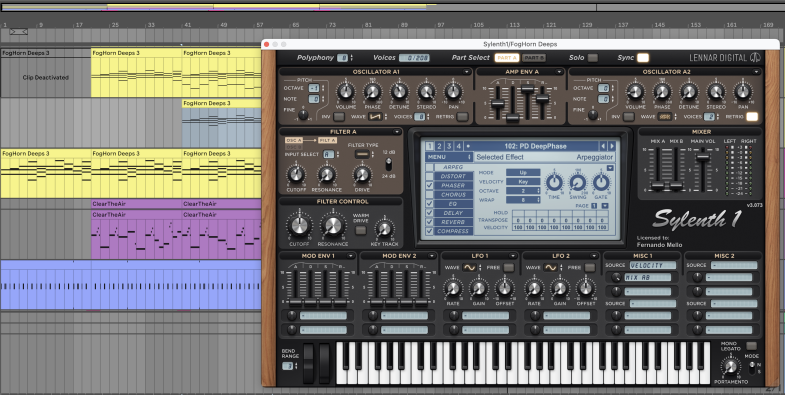
I love how the deep phase creates an ethereal, far-from-Earth feeling in the music.
So, who knows? Maybe those fireflies at the beginning of the song are from Mars!
Thank you for taking the time to explore “Shimmery”, the sixt track of my album. I’d love to hear your thoughts and impressions.
Feel free to share your experience or any questions you might have about the creative process behind this piece.
I encourage you to check out the rest of the album. Each track has its own unique story and sonic landscape waiting to be discovered.
Track 07 – Crystalline: Crafting a Universal Visual Soundtrack
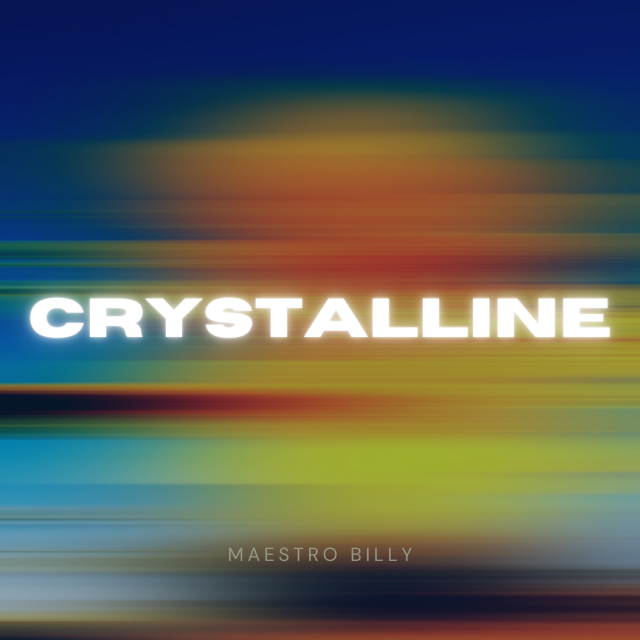
I aimed to create an intensely visual track—a song you could pair with any video to enhance its beauty.
Picture any scene: people walking in the early morning of a big city, whales gliding through the ocean from a drone’s perspective, a shooting star streaking across the horizon, or even white blood cells attacking a virus. From the most ordinary to the most extraordinary images, this song should complement them all.
To achieve this, I used that treated piano—the same one I used on Contemplation [LINK]—and the bass has an interesting behavior. It starts by following the chord progression, but in the middle, just before the anticipation builds, it changes completely, giving the feeling that something special is coming.
To evoke that moment of anticipation, I’ve incorporated a brief pause right after the final section of the song.
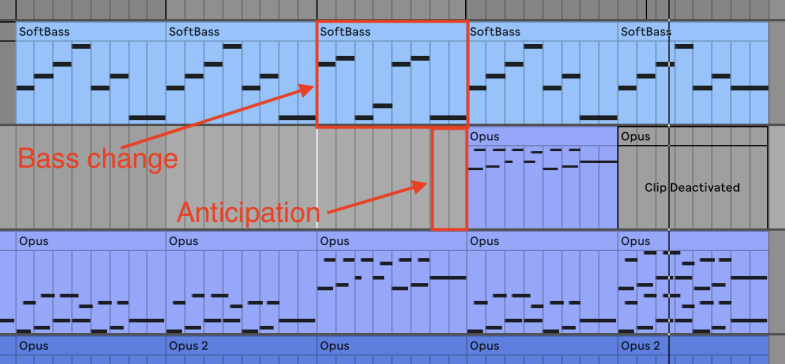
Try using it in your next Instagram Stories, or anywhere you need compelling and beautiful music to enhance the mood you want to convey. For doing this, check my Instagram Stories.
Thank you for taking the time to explore “Crystalline”, the seventh track of my album. I’d love to hear your thoughts and impressions.
Feel free to share your experience or any questions you might have about the creative process behind this piece.
I encourage you to check out the rest of the album. Each track has its own unique story and sonic landscape waiting to be discovered.
Track 08 – Resolution (Felipe’s Song): A Grandfather’s Symphony of Anticipation, Tension and Joy

While everything was serene in the previous track, “Crystalline”, this one is fraught with tension.
This is the album’s most emotionally charged track. I began composing it late at night after learning my older daughter—the one who had faced medical issues and for whom I’d created THIS and THIS track—was about to give birth.
The challenge? We’re separated by 10,000 km, on different continents, and I couldn’t reach her before the baby’s arrival.
The combination of distance-induced stress, contained excitement about becoming a first-time grandfather, and worry about potential complications inspired this song.
You’ll notice a treated piano solo that runs throughout the piece. In the background, however, both instruments and chord progressions undergo significant changes. The song evolves from minor chords in the intro to major, uplifting progressions at the end, mirroring my emotional journey that night—from the moment we received news that things were in motion until the final call confirming all was well.
Initially titled “Calming”—mainly as a self-soothing measure—I later renamed it “Resolution.” This reflects the ultimate outcome: as always, things turned out fine. And if they weren’t fine, well, it surely wasn’t the end yet.
One aspect I particularly appreciate is the cellos’ role. They build tension until the song transitions to major chord progressions, effectively conveying my intended emotions. Additionally, there’s a significant shift in the song’s pace towards the end. It becomes slower, calmer, and considerably brighter than at the beginning.
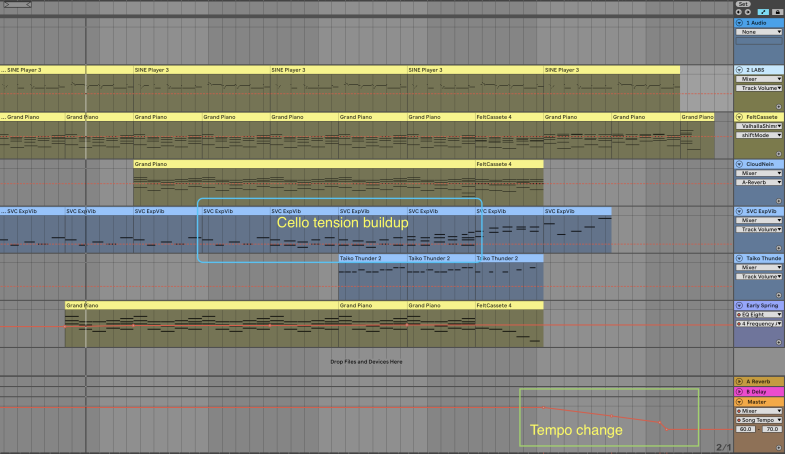
Thank you for taking the time to explore “Resolution”, the eighth track of my album. I’d love to hear your thoughts and impressions.
Feel free to share your experience or any questions you might have about the creative process behind this piece.
I encourage you to check out the rest of the album. Each track has its own unique story and sonic landscape waiting to be discovered.
Track 09 – A New Romanticism: The Metamorphosis of Sound

Ha! This one is a weird track.
Inspired by reading Ted Gioia’s post “Notes Toward a New Romanticism” about how music is changing and that we’re on the verge of a new Romantic movement (an opinion which resonates 100% with what I believe in this AI music generation era we’re living in now), I created this track in a totally unexpected way.
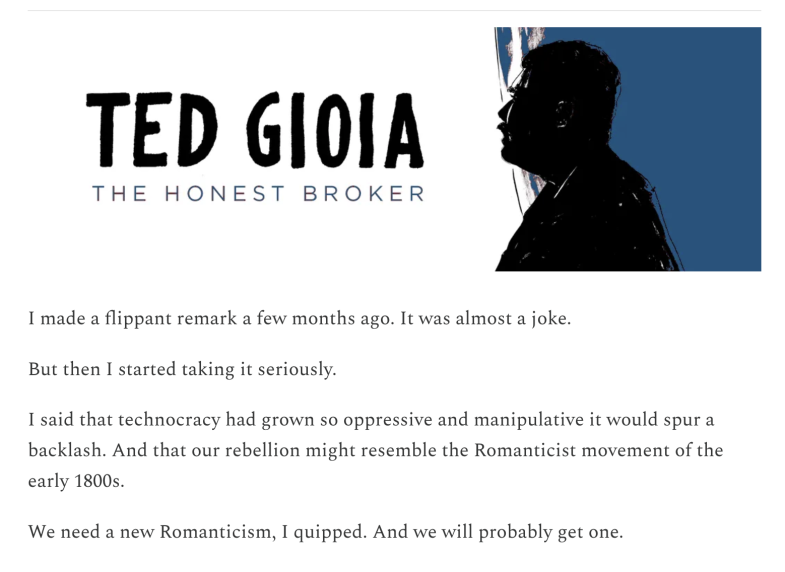
It wasn’t meant to be the way it is. Initially, it was a 1-minute jazzy tune with a swing piano, some acoustic bass, drum toms playing like a jungle rhythm, and a guitar solo on top.
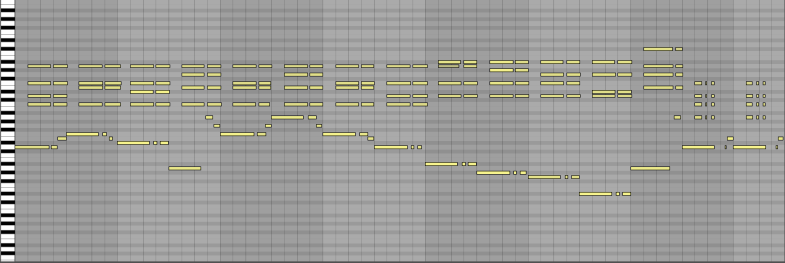
However, in that form, it sounded so dull and uninspired that I abandoned it for a while.
After reading Ted’s post and realizing how it echoed my thoughts, I decided to apply the concept of creating a genuinely new sound to this song.
So, I rendered it as it was (the uninspired jazzy tune) and put it into PaulXStretch, an app that allows you to modify, elongate, add harmonics, stretch, spread frequencies, and perform many other audio processing techniques. The best part? It’s a free plugin that you can download HERE.
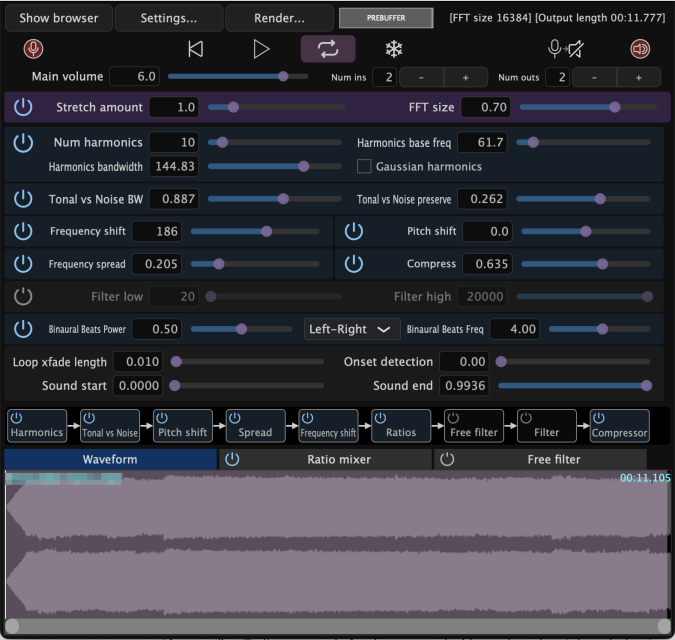
Now, back to the process.
I put the lousy jazz into PaulXStretch, stretched it 12 times, tweaked numerous parameters, and ended up with two enormous 12-minute files that became the foundation for the new version. It wasn’t even jazz anymore—it was something entirely different. The original idea and chord progression were still there, but the sound had completely transformed.
Using these files as a base, I started adding more instruments, which led to the result you’ll hear now.
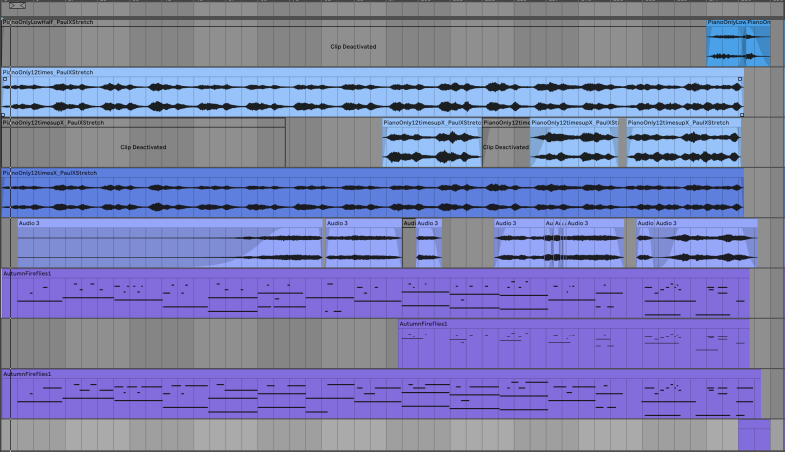
The song was initially going to be called “This Used to Be a Lousy Jazz,” but I changed it to embrace the New Romanticism concept. This title resonates with what I’ve done and with what AI can’t quite manage right now (or perhaps doesn’t bother to attempt).
Thank you for taking the time to explore “A New Romanticism”, the ninth track of my album. I’d love to hear your thoughts and impressions.
Feel free to share your experience or any questions you might have about the creative process behind this piece.
I encourage you to check out the rest of the album. Each track has its own unique story and sonic landscape waiting to be discovered.
Track 10 – The Endgame: Crafting Cinematic Darkness through Digital Alchemy
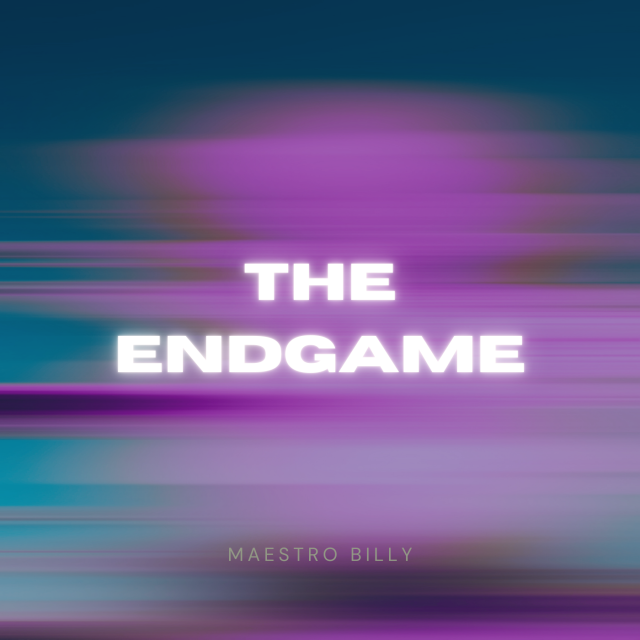
After applying the technique from the previous song [LINK], I was so pleased with the result that I used the same process for “The Endgame.”
Originally intended as the album’s finale, this track now marks the conclusion of what I call the “first part” of the album, as plans evolved during the creative process.
I began by playing random notes using VAULTS, a free plugin from Crow Hill.
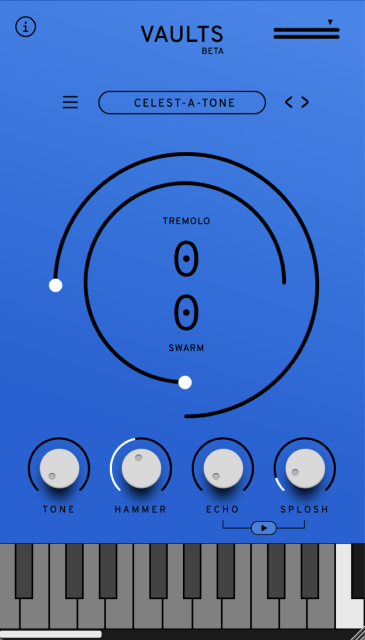
I then rendered these notes and processed them through PaulXStretch. While maintaining the original duration, I manipulated harmonics, frequencies, and other elements to create a completely different sound.
The result is a dark, cinematic piece. To enhance its somber atmosphere, I used another plugin called Shade. If you listen closely at the end, you’ll hear a low drone with unusual wah-wah movements—that’s Shade in action. I’m particularly fond of this final section. It introduces a more positive vibe with the chord progression, yet maintains an underlying ominous feeling. The overall effect is quite grand.

I heavily processed the instruments with hybrid reverbs, shimmering effects, and harmonic enhancers. Interestingly, even after the song ended, the processing continued, creating a final “breath.” This effect makes it sound as if something truly significant has concluded.
Thank you for taking the time to explore “The End Game”, the tenth track of my album. I’d love to hear your thoughts and impressions.
Feel free to share your experience or any questions you might have about the creative process behind this piece.
I encourage you to check out the rest of the album. Each track has its own unique story and sonic landscape waiting to be discovered.
Track 11 – Sinking Karma: Nocturnal Drips Inspire an Indian-Infused Ambient Journey
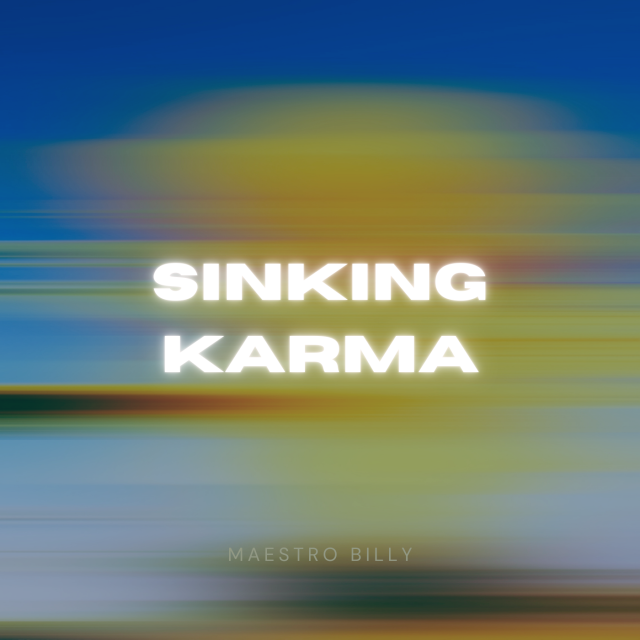
Remember the place where I recorded the ambient sound for “A House in a Forest” [LINK]? Well, some strange things started happening there at night.
My wife and I were alone in this enormous house, nestled in a forest on the outskirts of a small city. Late one night, while watching “Monkey Man” on TV, I heard a persistent noise coming from the kitchen. Upon investigation, I discovered the faucet wasn’t fully closed, creating a constant dripping sound. The drops were falling directly into a mug full of water, and the spacious kitchen’s acoustics amplified the effect, producing a unique sound.
Intrigued, I recorded the dripping with my handheld device, imported it into Ableton, determined its BPM, and built the entire song around this rhythm.
Once again, I employed PaulXStretch to process the dripping loop. Inspired by the tabla player in “Monkey Man,” I crafted a song with Indian-inspired vibes.
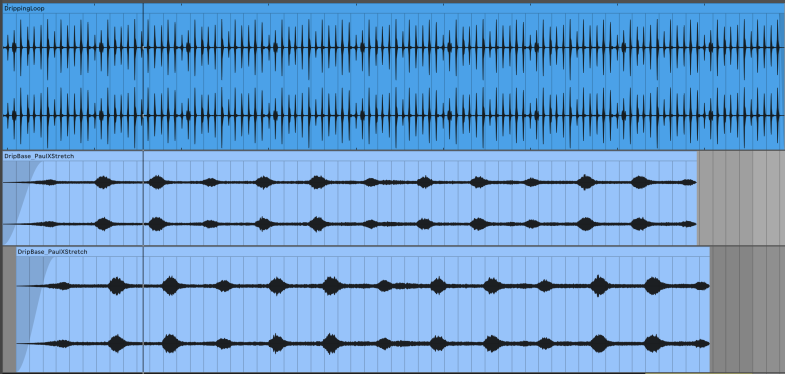
There’s also a continuous drone underlying the track, reminiscent of those created by sitars.
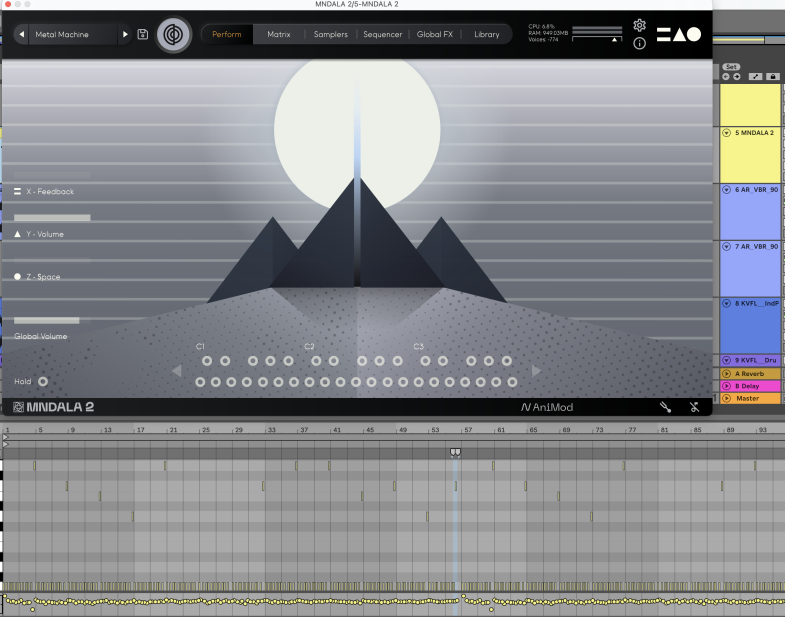
Here’s the interesting part: if I hadn’t mentioned the dripping sound, you’d probably listen to the entire song without even noticing it. Isn’t that cool?
Thank you for taking the time to explore “Sinking Karma”, the eleventh track of my album. I’d love to hear your thoughts and impressions.
Feel free to share your experience or any questions you might have about the creative process behind this piece.
I encourage you to check out the rest of the album. Each track has its own unique story and sonic landscape waiting to be discovered.
Track 12 – Sanskrit Braams: Unleashing the Cinematic Roar of Ancient India
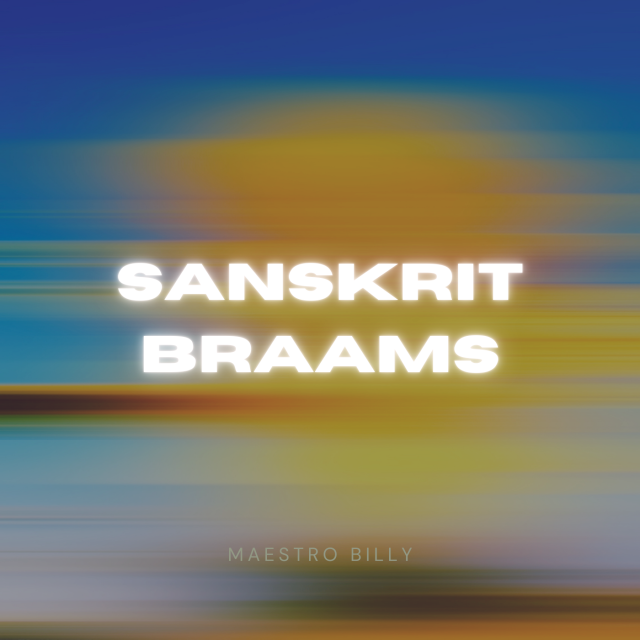
This song originated from research I conducted while working on sound design for an MR game.
My goal was to recreate the iconic “Braam” sound.
According to Wikipedia, BRAAAM (sometimes uncapitalized, or with varying numbers of repeated letters) is an onomatopoeia describing a loud, low sound that became popular in action film trailers during the 2010s. It’s commonly associated with the 2010 film Inception, though the sound’s origin in the film is disputed. This sound and its variants are often called the “Inception sound,” “Inception noise,” or “Inception horn.”
Here’s a Braam for you:
To achieve this sound, I used Mntra’s MNDALA plugin with the Torden sound and added OTT to enhance its intensity. I also layered a real Alpenhorn sound, also processed with OTT, for added drama. Throughout the song, a Dilruba plays a single note to slightly temper the Braam’s intensity.
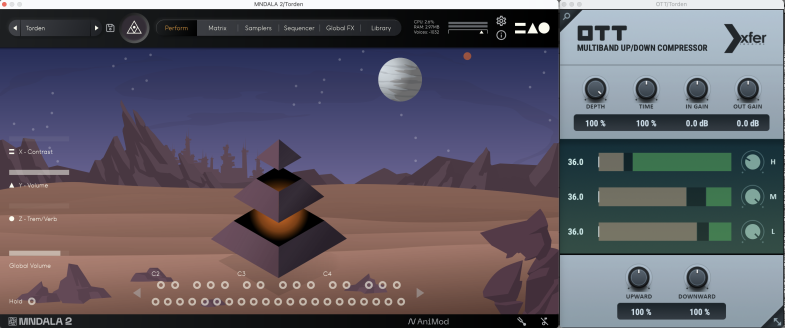
As I continued exploring MNDALA, I discovered a monk’s throat singing sound, which I incorporated into the middle and end of the song. I also included some voice samples left over from a VR project I had previously done for India.
The drums reminds us of a Funk Carioca beat, as I wanted to take out a little bit of the drama and the full-on Asian vibes.
The name of the song came after I sent it to a friend of mine from India, asking her if there was some strange words or lyrics in the singing. Better be safe than sorry. She replied that she couldn’t understand the lyrics, as they probably were in Sanskrit. 😉
Thank you for taking the time to explore “Sanskrit Braams”, the twelfth track of my album. I’d love to hear your thoughts and impressions.
Feel free to share your experience or any questions you might have about the creative process behind this piece.
I encourage you to check out the rest of the album. Each track has its own unique story and sonic landscape waiting to be discovered.
Track 13 – Hexameter pt.1: Transforming Ancient Poetry into Modern Soundscapes

This song (and the next one) has an interesting background.
I learned about hexameter from Ted Gioia’s Substack. According to Wikipedia, hexameter is a metrical line of verse consisting of six feet (a “foot” here is the pulse, or major accent) in an English line of poetry.
The Wikipedia article provides the foundation for creating hexameter:
- A foot can be made up of two long syllables (– –), called a spondee, or a long and two short syllables (– ? ?), called a dactyl.
- The first four feet can be either spondees or dactyls.
- The fifth foot is almost always a dactyl, and the last must be a spondee or trochee (together forming an adonic). Exceptions can occur when a polysyllabic (especially Greek) name ends a verse.
With these constraints in mind, I thought about translating this into sound, and came up with a type of Morse code to turn this into an audible sound without the verses.
Here how it looks:

I then repeated this hexameter/Morse code pattern in multiple notes, creating chord-like sounds using the Dot Allison Dulcet plugin I used on track 01 [LINK].
On top of these chords, there’s a solo vocal performing progressions based on the underlying chords.
Additionally, all Dot Allison voices are spatialized (another reason the album is called “Ambi,” due to the Ambisonic mixing), and, finally, I added layers of bass, drums, claps, and keyboards to give it a more modern feel.
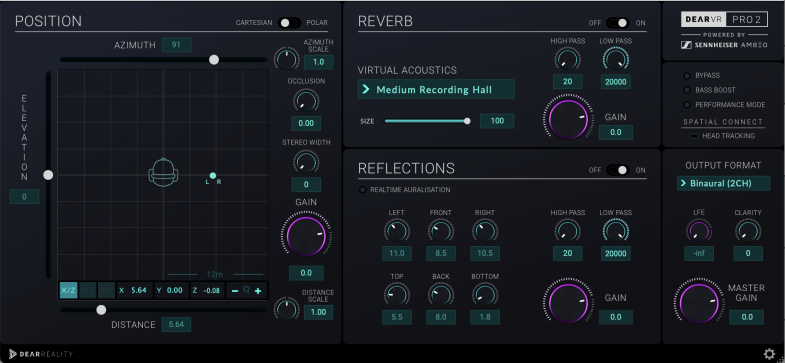
Thank you for taking the time to explore “Hexameter Pt.1”, the thirteenth track of my album. I’d love to hear your thoughts and impressions.
Feel free to share your experience or any questions you might have about the creative process behind this piece.
I encourage you to check out the rest of the album. Each track has its own unique story and sonic landscape waiting to be discovered.
Track 14 – Hexameter pt.2: Slowing the Rhythm, Amplifying the Madness
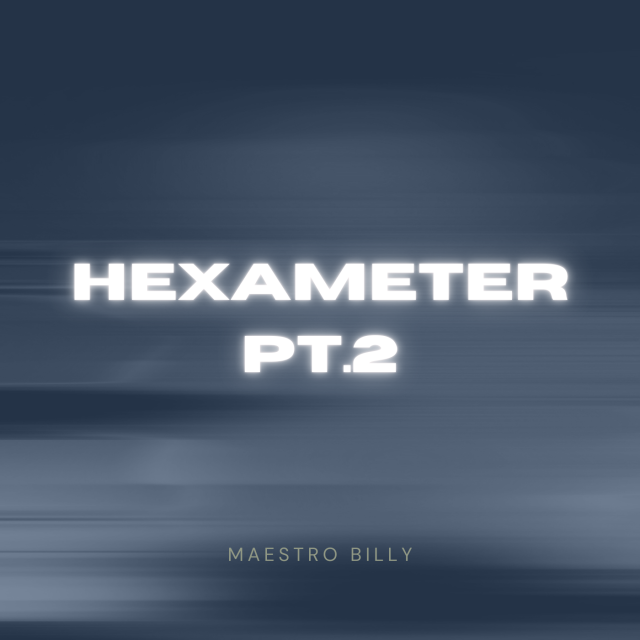
It is actually the part 1, as it was the starting point for all this Hexameter madness.
But, after I came up with part 1, I thought that I could revamp the original Hexameter, and turn it into a second part of the song.
Just like Genesis’ Home by the Sea and Second Home by the Sea, the second part should be slower and crazier than the first part.
And that’s what I did.
I turned the bpm down, changed the morse code basis to vocal progressions, so that all spatialized voices could create a cacophony of chords while playing together, and removed the drums. The same structure, in a different key, with different progressions and vocals.
And waaaay slower.
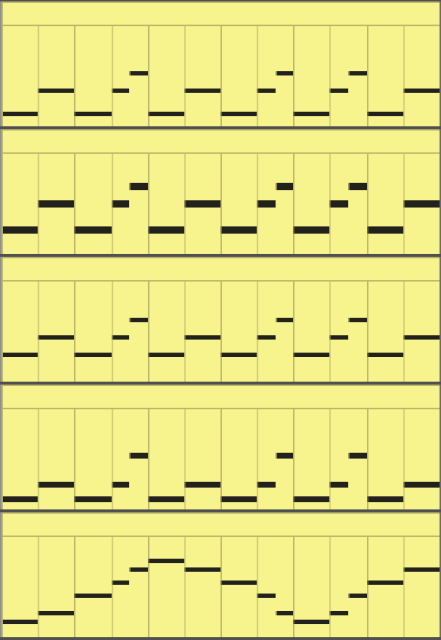
Thank you for taking the time to explore “Hexameter Pt.2”, the fourteenth track of my album. I’d love to hear your thoughts and impressions.
Feel free to share your experience or any questions you might have about the creative process behind this piece.
I encourage you to check out the rest of the album. Each track has its own unique story and sonic landscape waiting to be discovered.
Track 15 – Reassurance: Redefining Music Creation in the Age of Artificial Intelligence

There are numerous ongoing discussions about AI’s impact on music.
A key concern is AI potentially replacing musicians, leading to an increase in AI-generated music on platforms.
However, I believe this concern isn’t entirely valid. AI still has significant limitations in its creative capabilities, as it relies solely on the data it’s fed. There will always be room for human creativity. At the same time, I firmly believe that while AI can speed up certain processes, there will always be room for human creativity, even as AI-generated music becomes more prevalent.
Now, let me tell you about LAIFE, a startup I co-founded.
At LAIFE, we uphold this principle of “AI meets Human” as a core standard. We use cutting-edge AI technology to generate personalized Functional Music that alleviates symptoms of anxiety, stress, and burnout. This provides users with a convenient and accessible solution to manage their mental health and improve overall well-being through a Mental Fitness Plan.
Beyond generating AI music, we anticipated the debate about ownership of AI-generated music. So, we chose a different approach from companies like Suno, Aiva and others.
Instead of generating music directly based on prompts, we used royalty-free MIDI files to train our Machine Learning system. And then, the system delivers only MIDI files back to us.
This approach aligns with the notion that if we receive a MIDI file and work on it, we’re adding a human touch. The music is still AI-generated but post-produced by humans, which removes many of the AI characteristics from the original file.
It’s worth noting that these MIDI files wouldn’t be particularly pleasant to listen to on their own—they’d sound like a dull version of the first Mario Bros game soundtrack.
By combining AI and human creativity at LAIFE, we’ve established new standards for delivering music. Through the addition of specific frequencies and sounds, we help listeners cope with anxiety, depression, stress, and various mental health issues. All of this is backed by medical research.
Now, let’s consider the other side of music production: delivery and distribution.
Some music distributors proudly claim they can detect when AI-generated music is uploaded to their platforms and block its release.
Well…
That’s why it’s called “Reassurance.” It gave me certainty that we’re not just riding the latest AI music trend. It confirmed that humans are still crucial to the entire musical process, and that music platforms and distributors won’t be overwhelmed by AI-generated music in the near future—at least, that’s my hope.
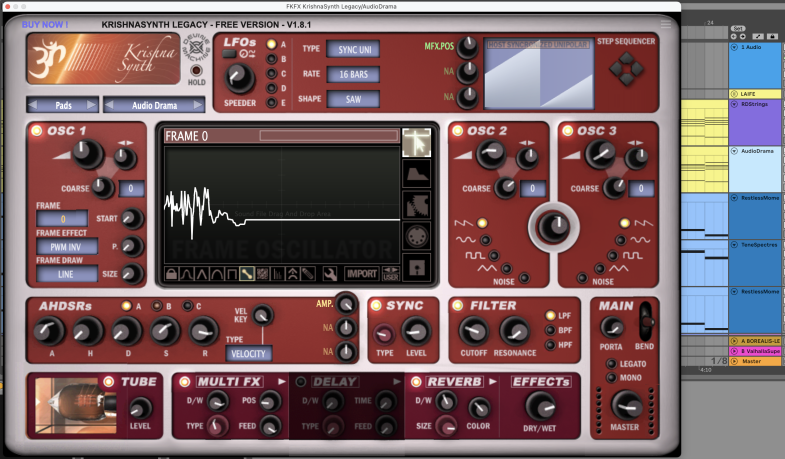
Thank you for taking the time to explore “Reassurance”, the fifteenth track of my album. I’d love to hear your thoughts and impressions.
Feel free to share your experience or any questions you might have about the creative process behind this piece.
I encourage you to check out the rest of the album. Each track has its own unique story and sonic landscape waiting to be discovered.
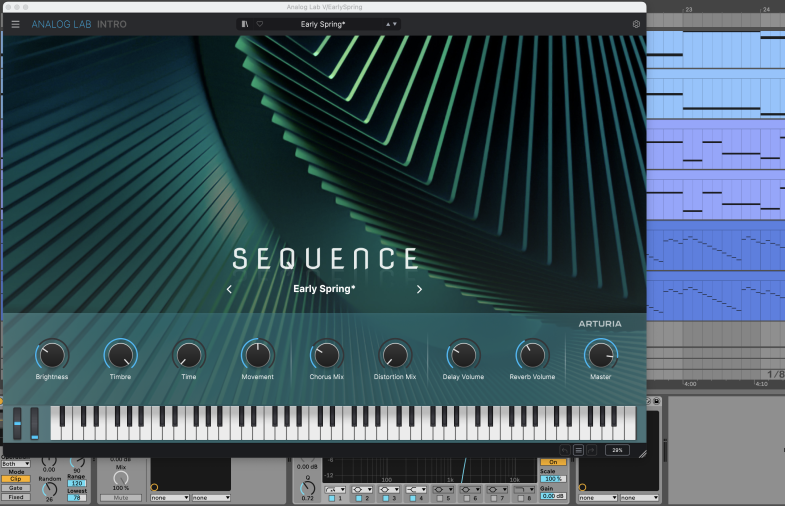
Track 16 – A New Dawn: Composing the Sunrise and Bridging Musical Worlds
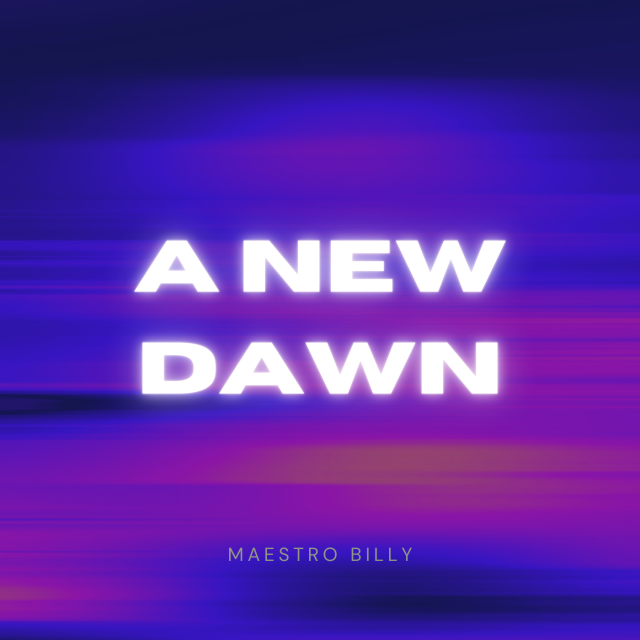
The final song of the album. Like many contemporary pieces of media—movies and series, for example—it leaves a “cliffhanger” for what’s to come in the next album.

“A New Dawn” is exactly what the name suggests: a new day.
While in Brazil, I often had to wake up extremely early to join business meetings in Europe, Asia, and Oceania.
This was the case when I started this song. A meeting was scheduled for 4 PM in Singapore, which translated to 5 AM in my local time in South America.
At 4 AM, fighting drowsiness and slumber, I prepared coffee to ensure I could understand and coherently respond during the meeting.
Before brewing the coffee, I had an idea: I placed my microphone in the garden at the House in a Forest [LINK] to record the transition from night to morning.
The meeting went well, and by the time it ended at 6 AM, morning had arrived.
With two hours of ambient recording, I began working on a song that could enhance the perception of night ending and day beginning—a new dawn.
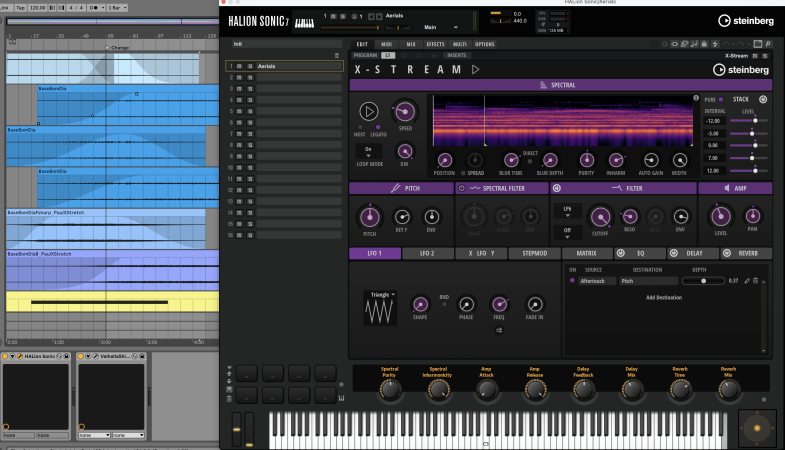
The ambient recording itself provided rich resources, with cicadas and crickets at night gradually giving way to early morning birdsong. I aimed to enhance the sun’s presence and intensity, using music to represent sunrays and changing notes to reflect the shifting atmosphere, mood, and hope that a new day brings.
While the song isn’t two hours long, it’s long enough to create a perceivable blend of night and day, translated into music and chords. If you listen to the end, you’ll hear some fascinating sounds that capture the essence of a new day—I guarantee it.
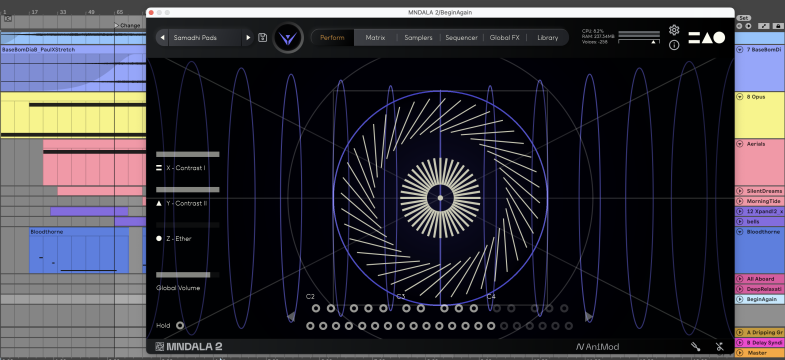
After listening to “A New Dawn,” you can seamlessly transition back to the first track of the album, “Be Present.” They form a perfect full circle in terms of harmony and chord progressions. The key of B in “A New Dawn” flows naturally into the key of F in “Be Present,” creating an intrinsic sense of awe.
Give it a try!
Thank you for taking the time to explore “A New Dawn”, the final track of my album. I’d love to hear your thoughts and impressions.
Feel free to share your experience or any questions you might have about the creative process behind this piece.
I encourage you to check out the rest of the album. Each track has its own unique story and sonic landscape waiting to be discovered.
Best wishes,
Billy.
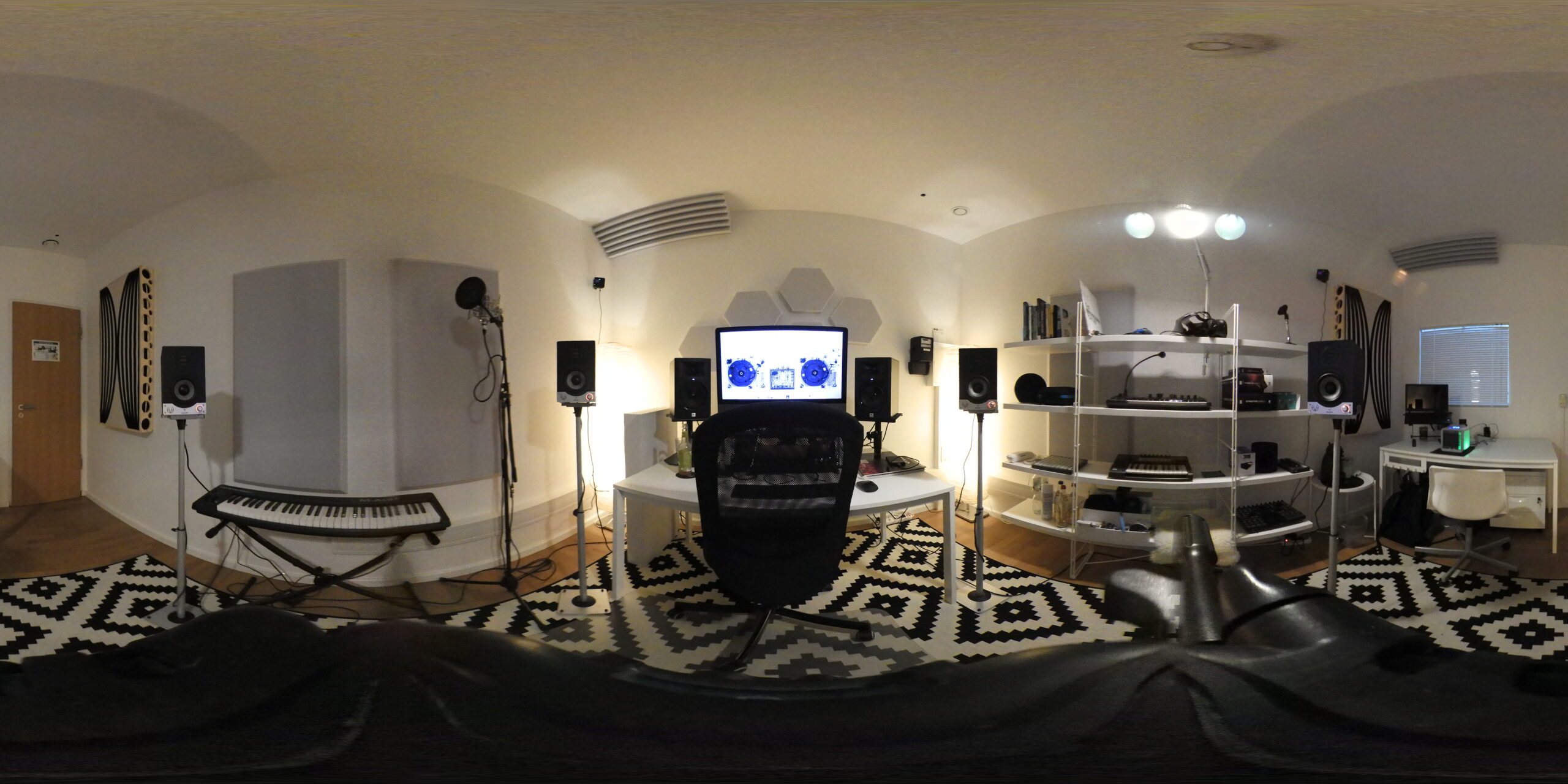
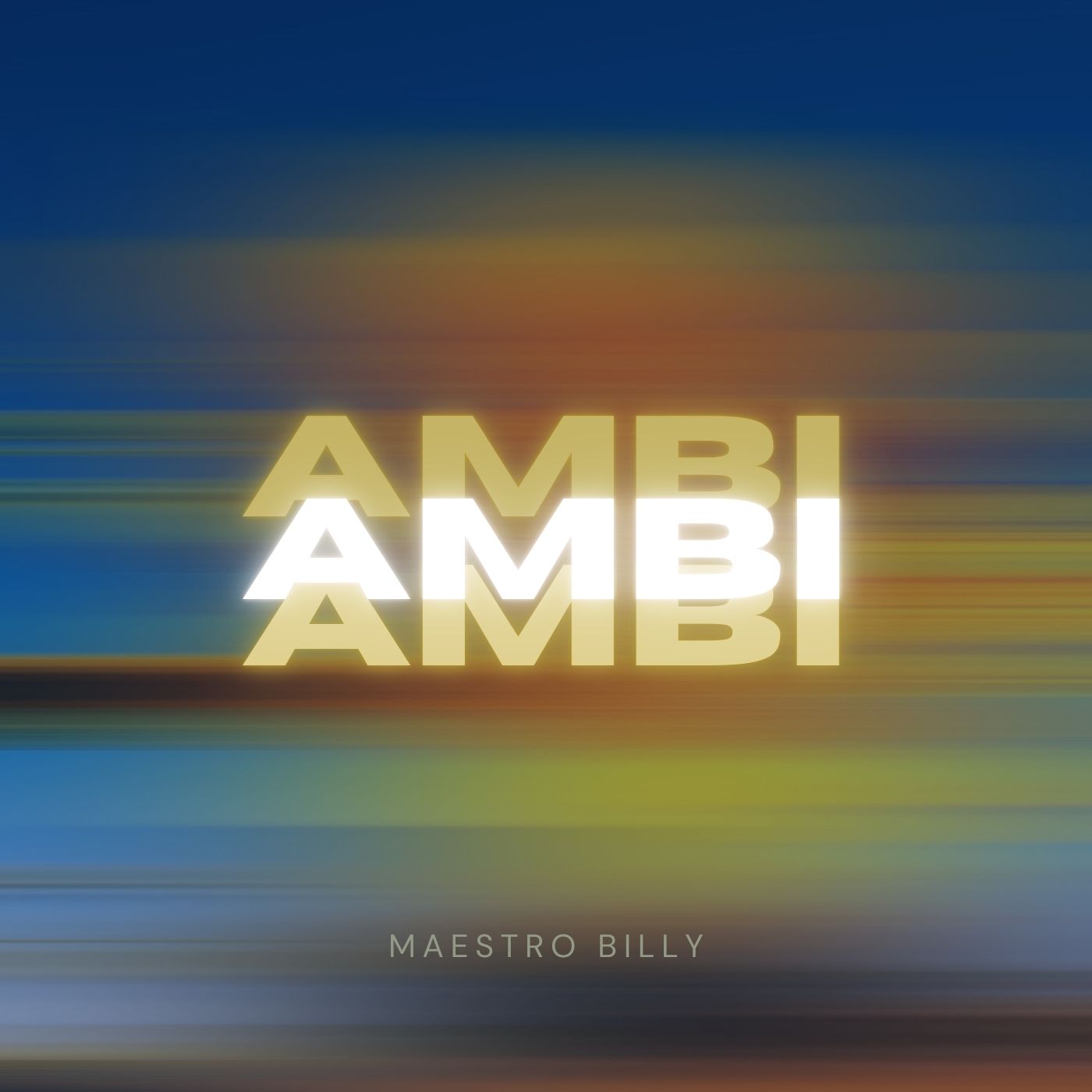
Leave a Reply